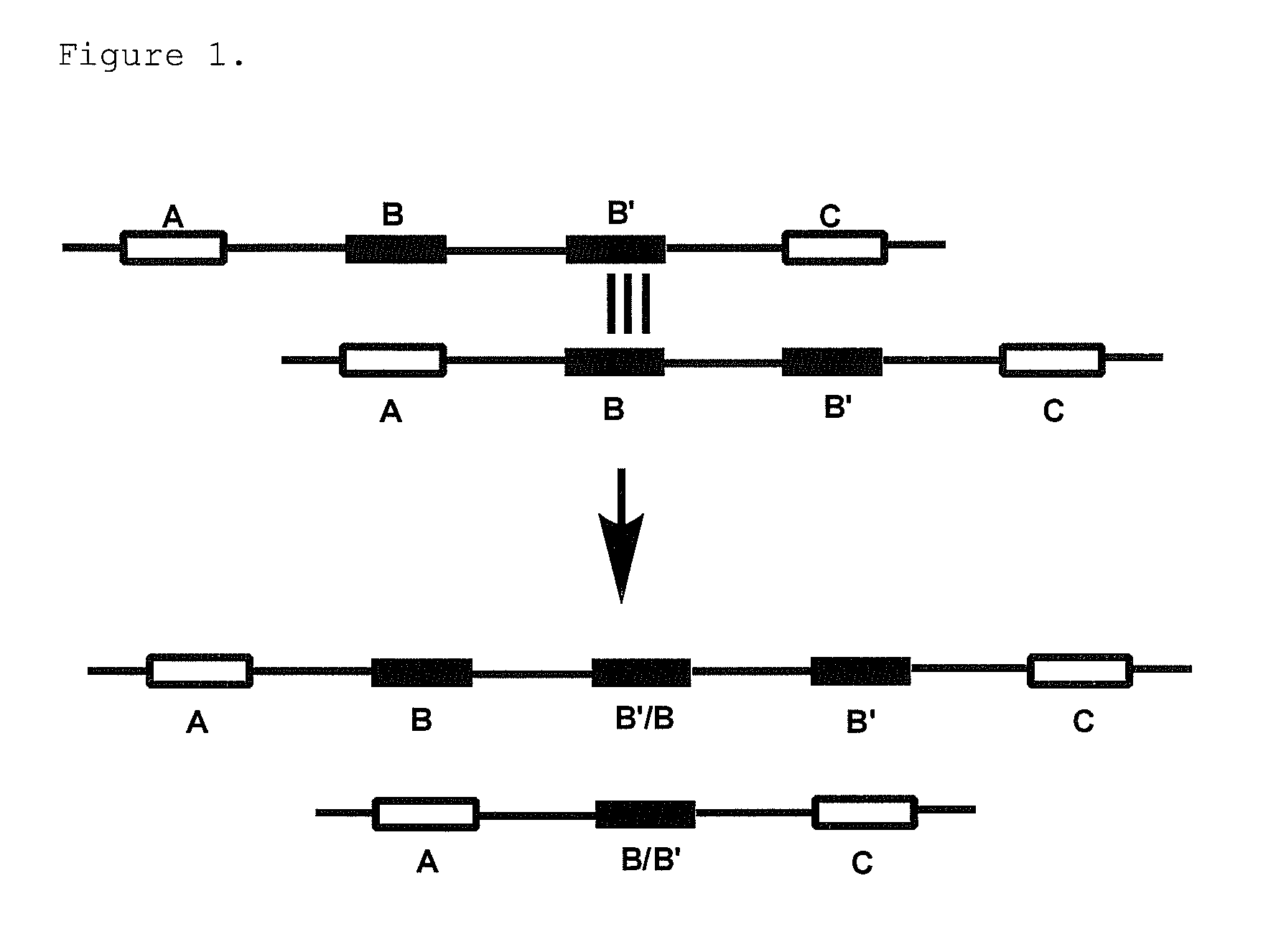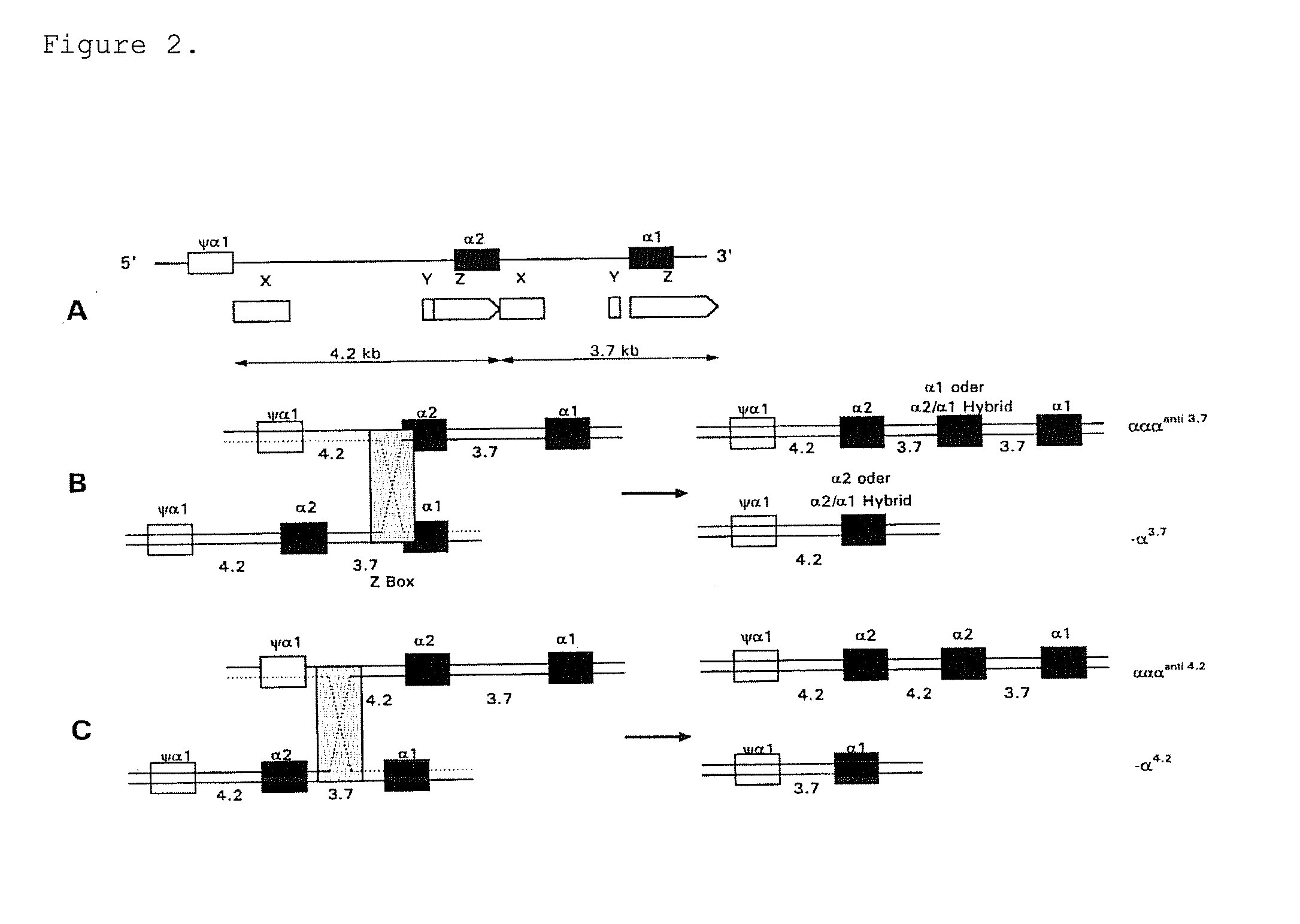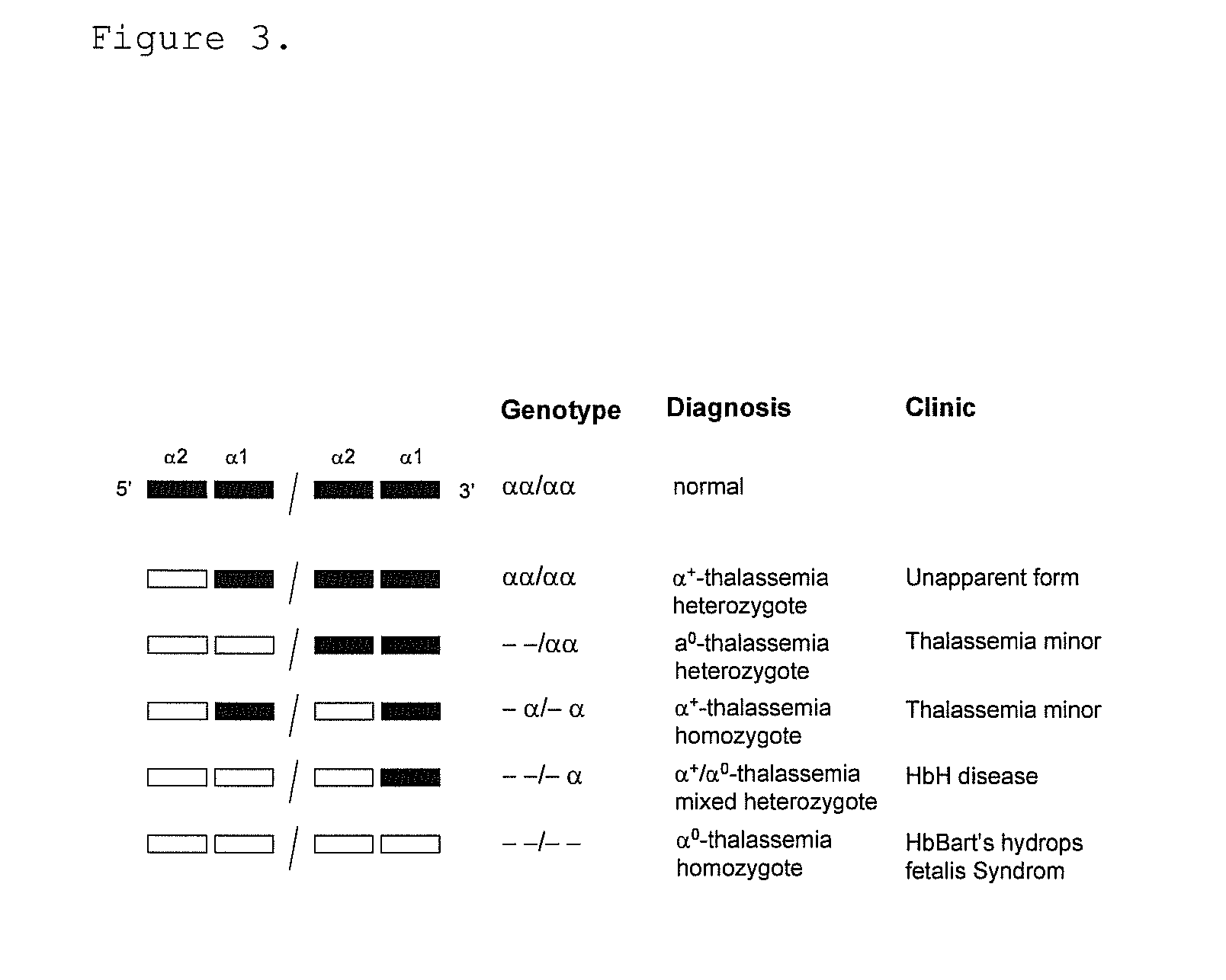Gene dosage analysis
a gene and dosage technology, applied in the field of differential quantitative detection of multiple, closely linked genes, can solve the problems of labor-intensive and/or time-consuming current technologies, severe anemia or hydrops fetalis, and most hereditary diseases are genetically very complex, etc., to achieve accurate screening, accurate quantitative detection of gene(s), and accurate screening
- Summary
- Abstract
- Description
- Claims
- Application Information
AI Technical Summary
Benefits of technology
Problems solved by technology
Method used
Image
Examples
example 1
Optimization of Quantitative RT PCR
[0138]Optimization of RT PCR for quantification was carried out using the DNA-intercalating fluorescent dye SYBR-green (to account for potential fluorescence signals arising due to non-specific double-stranded products with intercalating dyes). The reaction mixture contained 1× LightCycler FastStart DNA Master SYBR Green I (Roche Diagnostics AG, Rotkreuz, Switzerland), 1 mM MgCl2, 0.5 μM forward and reverse primer for either of the head or tail region of α1 (SEQ ID No. 1-4) or of the head or tail region of α2 (SEQ ID No. 5-8), or 1 μM forward and reverse primer specific for the β-globin gene (SEQ ID No. 17-18). The PCR reactions were performed in a total volume of 10 μl by distributing 8 μl aliquots of the master mix into the capillaries, followed by the addition of 2 μl of DNA containing 10 ng / μl.
example 2
[0139]Based on the optimized reaction conditions according to Example 1, the method was adapted for the use of labeled probes. Four different reaction mixtures were prepared, whereas all of them contained 1× LightCycler FastStart DNA Master HybProbe (Roche) and 1.5 mM MgCl2 in addition to the relative primers and probes.[0140]1. 0.5 mM α1 head-forward primer SEQ ID No. 1 and α1 head-reverse primer SEQ ID No. 2, 0.5 mM fβ-globin forward and reverse primers SEQ ID No. 17 and 18, 0.2 mM of the FL-labeled hybridization probes and 0.3 mM of the LC-labeled hybridization probes for both the α1 head gene region (SEQ ID No. 9 and 10) and the β-globin gene region (SEQ ID No. 19 and 20)[0141]2. 0.5 mM α2 head-forward primer SEQ ID No. 5 and α2 head-reverse primer SEQ ID No. 6, 0.5 mM forward and reverse β-globin primers SEQ ID No. 17 and 18, 0.2 mM of the FL-labeled hybridization probes and 0.3 mM of the LC-labeled hybridization probes for both the α2 head gene region (SEQ ID No. 13 and 14) an...
PUM
| Property | Measurement | Unit |
|---|---|---|
| Length | aaaaa | aaaaa |
Abstract
Description
Claims
Application Information
 Login to View More
Login to View More - R&D
- Intellectual Property
- Life Sciences
- Materials
- Tech Scout
- Unparalleled Data Quality
- Higher Quality Content
- 60% Fewer Hallucinations
Browse by: Latest US Patents, China's latest patents, Technical Efficacy Thesaurus, Application Domain, Technology Topic, Popular Technical Reports.
© 2025 PatSnap. All rights reserved.Legal|Privacy policy|Modern Slavery Act Transparency Statement|Sitemap|About US| Contact US: help@patsnap.com



